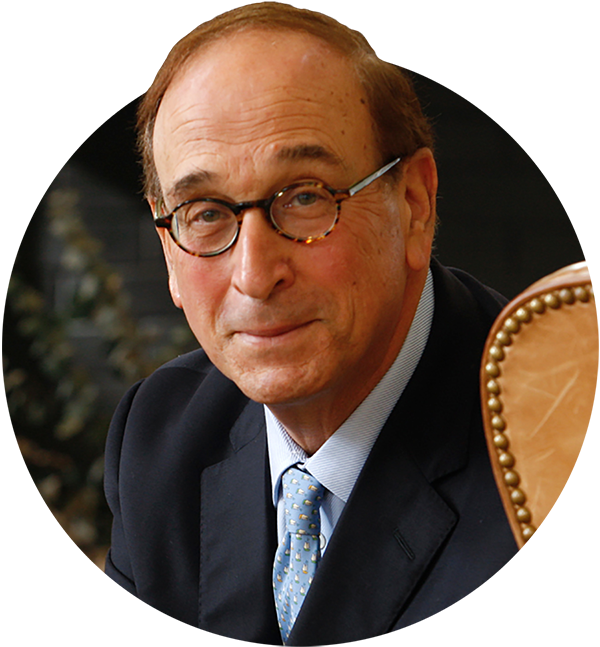

/ Ingenuity / / Caroline Newman / 4.17.17
The rapid rise of artificial intelligence could revolutionize the workplace just as forcefully as the advent of the machine did more than two centuries ago.
“I believe the ‘Smart Machine Age’ will be as disruptive for us as a society as the Industrial Revolution was for our ancestors,” said Edward Hess, a professor in the University of Virginia’s Darden School of Business.
Hess’s book, “Humility Is the New Smart: Rethinking Human Excellence in the Smart Machine Age,” examines how workers can and should adapt as advancing technology encroaches upon more and more jobs, especially in the professional sector. Hess, who has written 11 other books exploring the DNA of organizational and individual performance, particularly focused on how the advent of smart machines could change traditional leadership roles like that of the chief executive officer.
The Industrial Revolution business model was largely based on hierarchy and scale, and leaders occupied a command-and-control role in which they were expected to know how things needed to be done and direct others to do so. With the rise of robotics and other smart machines, Hess argues that workers should now focus on doing the jobs that technology cannot do well – those that require critical thinking, creativity, high emotional engagement and real-time problem solving.

Edward Hess is a professor of business administration at UVA’s Darden School of Business. He is the author of 12 books, more than 60 articles and more than 60 Darden case studies focused on leadership, managing growth and growth strategies.
The coming change could spell the end of the traditional chief executive officer and the introduction of a “chief enabling officer.”
Those jobs require a new type of leader. “I do not believe that a command-and-control leadership model best enables those skills,” Hess said. Instead, he said, the next generation of CEOs should practice what he calls the “Four E’s.” Below, Hess describes each of the four leadership practices he believes will drive success in the Smart Machine age.
Edward Hess: What I mean by engage is how you go forth in the world. And the leader tomorrow is going to go forth, if you will, with a quiet ego in order to be a lifelong learner. And by quiet ego, you've got to tamp down that all me stuff-- the self-protective, the defensive, and believing that you know how the world works, and that you know more than other people. You've got to slow yourself down and be open to learning.
The best leaders will be lifelong learners and will engage the world with what Hess calls “a quiet ego” based on humility.
“By humility, I do not mean meekness, submissiveness or thinking less of yourself,” Hess said. “I mean having an accurate view of one’s strengths and weaknesses, being able to acknowledge and own one’s mistakes and being open to new and contradictory information.”
Edward Hess: The leader's got to excel at managing herself or himself. And by managing self, I mean managing how you think, how you behave, and managing your emotions. This is so important because the two biggest inhibitors to human excellence are ego and fear, and how you treat, connect, and relate to other people. So you've got to focus on managing self. You are responsible for your behaviors. You have hundreds of choices every day as to how you act. Take responsibility and manage yourself and be a great role model.
Good leaders should excel at managing themselves and others in a way that builds trusting relationships, which Hess calls “mission critical” because critical thinking and innovation – two traits that set humans apart from robots – are often best done in groups.
“The Smart Machine Age will reward people who value the ‘Big We’ more than the ‘Big Me,’” he said. “We need others to be all that we can be.”
Edward Hess: How do you embrace a world that's characterized by volatility, uncertainty, and ambiguity? Well you embrace it like a courageous scientist. You're comfortable in the unknown, and you've got a method. The analogy is the scientific method. You've got a way to go forth and learn through experimentation, and you're comfortable that your process will help you figure out how to proceed. That's how the leader of the future is going to win.
Rather than clinging to hierarchy or control, leaders should embrace uncertainty, ambiguity and complexity, much as “a good, courageous scientist” would, according to Hess.
“I like the scientific method analogy for the workplace, because scientists are trained to acknowledge the magnitude of their ignorance and to treat their beliefs as hypotheses to be constantly tested and subject to modification by better data,” he said. “Business people need a method to continuously learn, unlearn and relearn.”
Edward Hess: The fourth attribute of the leader is to enable others. As we go into this world of smart machines, humans are basically going to do what technology can't do well. Critical thinking, innovative thinking, creativity, and mostly engaging with other peoples. The challenge is we are suboptimal at all of those tasks. We can't do them by ourselves, and we need the right kind of environment. The role of a leader is to enable the highest level of human behavior by creating the right environment and role modeling the right behaviors and putting in place the right processes that will enable people to be all they can be.
In addition to managing employees, the best executives will constantly enable them, in the most positive sense of that word. Leaders must create and sustain a work environment that “promotes and supports the highest levels of human thinking, learning and collaboration,” Hess said.
“We know from science that the highest levels of human performance occur in a humanistic, positive, emotional environment where people are not fearful,” he said. “That is why I believe we need a different model of leadership – where the CEO is the chief enabling officer.”